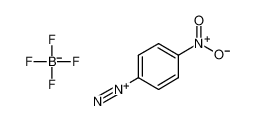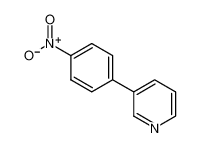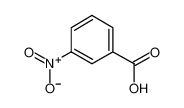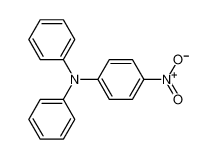1.Identification
1.1 GHS Product identifier
| Product name | nitrobenzene |
|---|
1.2 Other means of identification
| Product number | - |
|---|---|
| Other names | Rfna |
1.3 Recommended use of the chemical and restrictions on use
| Identified uses | For industry use only. Volatile organic compounds |
|---|---|
| Uses advised against | no data available |
1.4 Supplier's details
| Company | MOLBASE (Shanghai) Biotechnology Co., Ltd. |
|---|---|
| Address | Floor 4 & 5, Building 12, No. 1001 North Qinzhou Road, Xuhui District, Shanghai, China |
| Telephone | +86(21)64956998 |
| Fax | +86(21)54365166 |
1.5 Emergency phone number
| Emergency phone number | +86-400-6021-666 |
|---|---|
| Service hours | Monday to Friday, 9am-5pm (Standard time zone: UTC/GMT +8 hours). |
2.Hazard identification
2.1 Classification of the substance or mixture
Acute toxicity - Oral, Category 3
Acute toxicity - Dermal, Category 3
Acute toxicity - Inhalation, Category 3
Carcinogenicity, Category 2
Specific target organ toxicity – repeated exposure, Category 1
Hazardous to the aquatic environment, long-term (Chronic) - Category Chronic 3
Reproductive toxicity, Category 1B
2.2 GHS label elements, including precautionary statements
| Pictogram(s) |   |
|---|---|
| Signal word | Danger |
| Hazard statement(s) | H301 Toxic if swallowed H311 Toxic in contact with skin H331 Toxic if inhaled H351 Suspected of causing cancer H372 Causes damage to organs through prolonged or repeated exposure H412 Harmful to aquatic life with long lasting effects H360F |
| Precautionary statement(s) | |
| Prevention | P264 Wash ... thoroughly after handling. P270 Do not eat, drink or smoke when using this product. P280 Wear protective gloves/protective clothing/eye protection/face protection. P261 Avoid breathing dust/fume/gas/mist/vapours/spray. P271 Use only outdoors or in a well-ventilated area. P201 Obtain special instructions before use. P202 Do not handle until all safety precautions have been read and understood. P260 Do not breathe dust/fume/gas/mist/vapours/spray. P273 Avoid release to the environment. |
| Response | P301+P310 IF SWALLOWED: Immediately call a POISON CENTER/doctor/… P321 Specific treatment (see ... on this label). P330 Rinse mouth. P302+P352 IF ON SKIN: Wash with plenty of water/... P312 Call a POISON CENTER/doctor/…if you feel unwell. P361+P364 Take off immediately all contaminated clothing and wash it before reuse. P304+P340 IF INHALED: Remove person to fresh air and keep comfortable for breathing. P311 Call a POISON CENTER/doctor/… P308+P313 IF exposed or concerned: Get medical advice/ attention. P314 Get medical advice/attention if you feel unwell. |
| Storage | P405 Store locked up. P403+P233 Store in a well-ventilated place. Keep container tightly closed. |
| Disposal | P501 Dispose of contents/container to ... |
2.3 Other hazards which do not result in classification
none
3.Composition/information on ingredients
3.1 Substances
| Chemical name | Common names and synonyms | CAS number | EC number | Concentration |
|---|---|---|---|---|
| nitrobenzene | nitrobenzene | 98-95-3 | none | 100% |
4.First-aid measures
4.1 Description of necessary first-aid measures
General advice
Consult a physician. Show this safety data sheet to the doctor in attendance.
If inhaled
Fresh air, rest. Artificial respiration may be needed. Refer for medical attention.
In case of skin contact
Remove contaminated clothes. Rinse and then wash skin with water and soap. Refer for medical attention .
In case of eye contact
First rinse with plenty of water for several minutes (remove contact lenses if easily possible), then refer for medical attention.
If swallowed
Rinse mouth. Give a slurry of activated charcoal in water to drink. Rest. Refer for medical attention .
4.2 Most important symptoms/effects, acute and delayed
Can cause death due to respiratory failure. Classified as extremely toxic. The mean lethal oral dose is probably between 1 and 5 grams. Systemic effects may be delayed for a few hours. This compound is rapidly absorbed through the skin. It is a powerful methemoglobin former. Ethyl alcohol aggravates intoxication caused by nitrobenzene exposure. (EPA, 1998)
4.3 Indication of immediate medical attention and special treatment needed, if necessary
In rare cases of accidental poisoning by nitrobenzene treatment applied incl 3 exchange transfusions, 5 hyperbaric oxygen therapy sessions, which resulted in cure on 24th day.
5.Fire-fighting measures
5.1 Extinguishing media
Suitable extinguishing media
Water, foam, carbon dioxide, or dry chemical
5.2 Specific hazards arising from the chemical
Moderate explosion hazard when exposed to heat or flame. Reacts violently with nitric acid, aluminum trichloride plus phenol, aniline plus glycerine, silver perchlorate and nitrogen tetroxide. Avoid aluminum trichloride; aniline; gycerol; sulfuric acid; oxidants; phosphorus pentachloride; potassium; potassium hydroxide. Avoid sunlight, physical damage to container, freezing, and intense heat. (EPA, 1998)
5.3 Special protective actions for fire-fighters
Wear self-contained breathing apparatus for firefighting if necessary.
6.Accidental release measures
6.1 Personal precautions, protective equipment and emergency procedures
Use personal protective equipment. Avoid dust formation. Avoid breathing vapours, mist or gas. Ensure adequate ventilation. Evacuate personnel to safe areas. Avoid breathing dust. For personal protection see section 8.
6.2 Environmental precautions
Personal protection: complete protective clothing including self-contained breathing apparatus. Do NOT let this chemical enter the environment. Collect leaking and spilled liquid in sealable containers as far as possible. Absorb remaining liquid in sand or inert absorbent. Then store and dispose of according to local regulations.
6.3 Methods and materials for containment and cleaning up
SRP: Wastewater from contaminant suppression, cleaning of protective clothing/equipment, or contaminated sites should be contained and evaluated for subject chemical or decomposition product concentrations. Concentrations shall be lower than applicable environmental discharge or disposal criteria. Alternatively, pretreatment and/or discharge to a permitted wastewater treatment facility is acceptable only after review by the governing authority and assurance that "pass through" violations will not occur. Due consideration shall be given to remediation worker exposure (inhalation, dermal and ingestion) as well as fate during treatment, transfer and disposal. If it is not practicable to manage the chemical in this fashion, it must be evaluated in accordance with EPA 40 CFR Part 261, specifically Subpart B, in order to determine the appropriate local, state and federal requirements for disposal.
7.Handling and storage
7.1 Precautions for safe handling
Avoid contact with skin and eyes. Avoid formation of dust and aerosols. Avoid exposure - obtain special instructions before use.Provide appropriate exhaust ventilation at places where dust is formed. For precautions see section 2.2.
7.2 Conditions for safe storage, including any incompatibilities
Separated from combustible substances, reducing agents, strong oxidants, strong acids and food and feedstuffs. Store in an area without drain or sewer access.Store in a cool, dry, well-ventilated, dark location. Separate from acids, bases, oxidizing materials, and metals.
8.Exposure controls/personal protection
8.1 Control parameters
Occupational Exposure limit values
Recommended Exposure Limit: 10 Hr Time-Weighted Avg: 1 ppm (5 mg/cu m, skin).
Biological limit values
no data available
8.2 Appropriate engineering controls
Handle in accordance with good industrial hygiene and safety practice. Wash hands before breaks and at the end of workday.
8.3 Individual protection measures, such as personal protective equipment (PPE)
Eye/face protection
Safety glasses with side-shields conforming to EN166. Use equipment for eye protection tested and approved under appropriate government standards such as NIOSH (US) or EN 166(EU).
Skin protection
Wear impervious clothing. The type of protective equipment must be selected according to the concentration and amount of the dangerous substance at the specific workplace. Handle with gloves. Gloves must be inspected prior to use. Use proper glove removal technique(without touching glove's outer surface) to avoid skin contact with this product. Dispose of contaminated gloves after use in accordance with applicable laws and good laboratory practices. Wash and dry hands. The selected protective gloves have to satisfy the specifications of EU Directive 89/686/EEC and the standard EN 374 derived from it.
Respiratory protection
Wear dust mask when handling large quantities.
Thermal hazards
no data available
9.Physical and chemical properties
| Physical state | yellow liquid |
|---|---|
| Colour | Greenish-yellow crystals or yellow, oily liquid |
| Odour | Odor of volatile oil almond |
| Melting point/ freezing point | 41765ºC |
| Boiling point or initial boiling point and boiling range | 210-211°C(lit.) |
| Flammability | Class IIIA Combustible Liquid: Fl.P. at or above 60°C and below 93.33°C.Combustible. Gives off irritating or toxic fumes (or gases) in a fire. |
| Lower and upper explosion limit / flammability limit | Lower flammable limit: 1.8% by volume at 200 def F (93°C) |
| Flash point | 88°C |
| Auto-ignition temperature | 481.67°C |
| Decomposition temperature | no data available |
| pH | no data available |
| Kinematic viscosity | 1.863 mPa-s at 25°C |
| Solubility | In water:slightly soluble |
| Partition coefficient n-octanol/water (log value) | log Kow = 1.85 |
| Vapour pressure | 0.15 mm Hg ( 20 °C) |
| Density and/or relative density | 1.196g/mLat 25°C(lit.) |
| Relative vapour density | 4.2 (vs air) |
| Particle characteristics | no data available |
10.Stability and reactivity
10.1 Reactivity
no data available
10.2 Chemical stability
Stable under recommended storage conditions.
10.3 Possibility of hazardous reactions
/Fire hazard is/ moderate when exposed to heat, flame, or oxidizers.Aluminum chloride added to NITROBENZENE containing about 5% phenol caused a violent explosion [Chem. Eng. News 31:4915. 1953]. Heating a mixture of nitrobenzene, flake sodium hydroxide and a little water led to an explosion, discussed in [Bretherick's 5th ed. 1995]. Mixed with oxidants, i.e. dinitrogen tetraoxide, fluorodinitromethane, nitric acid, peroxodisulfuric acid, sodium chlorate, tetranitromethane, uranium perchlorate, etc., forms highly sensitive explosive, [Bretherick 5th ed, 1995]. Heated mixtures of nitrobenzene and tin(IV) chloride produce exothermic decomposition with gas production [Bretherick, 5th Ed., 1995].
10.4 Conditions to avoid
no data available
10.5 Incompatible materials
Explosive reaction with solid or concentrated alkalai + heat (eg, sodium hydroxide or potassium hydroxide), aluminum chloride + phenol (at 120°C), aniline + glycerol + sulfuric acid, nitric + sulfuric acid + heat.
10.6 Hazardous decomposition products
When heated to decomposition it emits toxic fumes of /nitrogen oxides/.
11.Toxicological information
Acute toxicity
- Oral: LD50 Rat oral 600 mg/kg
- Inhalation: no data available
- Dermal: no data available
Skin corrosion/irritation
no data available
Serious eye damage/irritation
no data available
Respiratory or skin sensitization
no data available
Germ cell mutagenicity
no data available
Carcinogenicity
NTP: Reasonably anticipated to be a human carcinogen
Reproductive toxicity
No information is available on the reproductive or developmental effects of nitrobenzene in humans. Developmental effects, such as birth defects or embryotoxic effects, have not been reported in animal studies with inhalation exposure to nitrobenzene. However, reproductive effects, including a decrease in fertility, reduced testicular weights, and decreased sperm production have been noted in inhalation and oral animal studies.
STOT-single exposure
no data available
STOT-repeated exposure
no data available
Aspiration hazard
no data available
12.Ecological information
12.1 Toxicity
- Toxicity to fish: LC50; Species: Brachydanio rerio (Zebra fish); Concentration: 113 mg/L for 4 days; Conditions: pH 7.5
- Toxicity to daphnia and other aquatic invertebrates: EC50; Species: Daphnia magna (Water flea, age <24 hr); Conditions: freshwater, static, 20°C, pH 8.2, hardness 130 mg/L CaCO3; Concentration: 11500 ug/L for 24 hr (95% confidence interval: 8800-15000 ug/L); Effect: intoxication, immobilization
- Toxicity to algae: EC50; Species: Pseudokirchneriella subcapitata (Green algae, age 3-7 days); Conditions: freshwater, static, 24°C, pH 7.3-9.77; Concentration: 20790 ug/L for 96 hr (95% confidence interval: 3450-38130 ug/L); Effect: decreased population biomass
- Toxicity to microorganisms: no data available
12.2 Persistence and degradability
NITROBENZENE WAS DEGRADED BY ACTIVATED SLUDGE IN MUNICIPAL WASTEWATER AT CONCN OF 400-600 G/CU M. ACTIVATED SLUDGE ADAPTED TO DEGRADATION OF HIGH PYRIDINE CONCN IS ALSO ABLE TO DECOMPOSE NITROBENZENE.
12.3 Bioaccumulative potential
The BCF of nitrobenzene in golden orfe (Leuciscus idus melanotus) was <10 in a 3 day static test(1). In a 28 day flow through test using fathead minnows, the BCF was 15(2). Another investigator obtained a BCF of 6 in fish (Poecilia reticulata)(3) and the bioconcentration test of the Japanese Ministry of International Trade and Industry report a BCF of <10(4). A BCF of 3.31 was also reported in unspecified fish(5). No biomagnification of nitrobenzene was observed in an aquatic ecosystem containing algae, daphnia magna, mosquito larvae, snails, and mosquito fish(6). BCF values of 3.1-4.8 and 1.6-7.7 were measured in carp (Cyprinus carpio) at concentrations of 0.125 and 0.0125 mg/L nitrobenzene, respectively, in a 6 week flow through test(7). In a 3 day static test using guppies, a BCF value of 2.4 was measured(8). Nitrobenzene had an uptake efficiency (defined as the ratio of the flux of chemical into the fish to the flux of chemical into the gill compartment) of 0.26 in rainbow trout(9). Nitrobenzene had a lipid based BCF of 28.32 in carp(10). A BCF of 1.47 was determined for goldfish (Carassius auratus)(11). In green algae (Chlorella fusca), a BCF of 24 was obtained(1). According to a classification scheme(12), these BCFs suggest bioconcentration in aquatic organisms is low(SRC).
12.4 Mobility in soil
The leachability of nitrobenzene was studied in three typical Norwegian soils, one which was sandy with a low organic content, and two organic soils(1). The resulting Koc and retardation factor for the sandy soil were 30.6 and 1.27, while for the two organic soils the Koc values were 42.8 and 69.6 and the retardation factors 3.36 and 5.52(1). Koc values for two Danish subsoils were 170 and 370(2). When a mixture of pollutants, including nitrobenzene, in spring water was added to a column of Lincoln fine sand over a 45 day period, the retardation factor of nitrobenzene was 1.9(3). The Koc calculated from this experiment was 200(3). The sorption of nitrobenzene on two soils, a Captina silt loam (pH 4.97; 1.49% organic carbon) and a McLaurin sandy loam (pH 4.43; 0.66% organic carbon) was measured in the presence of a mixture of 16 organic chemicals; Koc values for nitrobenzene of 89 and 105.6 were measured for the Captina and McLaurin soils, respectively(4). Koc values of 89 and 100 were measured in river sediment (6.5-16.9% organic matter) and coal wastewater pond sediment (52% organic matter), respectively(5). Other reported Koc values for nitrobenzene were 158(6), 36(7), 156(8), 100(9), 62-74 to particulate organic matter and 34-38 to dissolved organic matter(10). According to a classification scheme(11), these measured Koc values suggest that nitrobenzene has very high to moderate mobility in soil(SRC).
12.5 Other adverse effects
no data available
13.Disposal considerations
13.1 Disposal methods
Product
The material can be disposed of by removal to a licensed chemical destruction plant or by controlled incineration with flue gas scrubbing. Do not contaminate water, foodstuffs, feed or seed by storage or disposal. Do not discharge to sewer systems.
Contaminated packaging
Containers can be triply rinsed (or equivalent) and offered for recycling or reconditioning. Alternatively, the packaging can be punctured to make it unusable for other purposes and then be disposed of in a sanitary landfill. Controlled incineration with flue gas scrubbing is possible for combustible packaging materials.
14.Transport information
14.1 UN Number
| ADR/RID: UN1662 | IMDG: UN1662 | IATA: UN1662 |
14.2 UN Proper Shipping Name
| ADR/RID: NITROBENZENE |
| IMDG: NITROBENZENE |
| IATA: NITROBENZENE |
14.3 Transport hazard class(es)
| ADR/RID: 6.1 | IMDG: 6.1 | IATA: 6.1 |
14.4 Packing group, if applicable
| ADR/RID: II | IMDG: II | IATA: II |
14.5 Environmental hazards
| ADR/RID: no | IMDG: no | IATA: no |
14.6 Special precautions for user
no data available
14.7 Transport in bulk according to Annex II of MARPOL 73/78 and the IBC Code
no data available
15.Regulatory information
15.1 Safety, health and environmental regulations specific for the product in question
| Chemical name | Common names and synonyms | CAS number | EC number |
|---|---|---|---|
| nitrobenzene | nitrobenzene | 98-95-3 | none |
| European Inventory of Existing Commercial Chemical Substances (EINECS) | Listed. | ||
| EC Inventory | Listed. | ||
| United States Toxic Substances Control Act (TSCA) Inventory | Listed. | ||
| China Catalog of Hazardous chemicals 2015 | Listed. | ||
| New Zealand Inventory of Chemicals (NZIoC) | Listed. | ||
| Philippines Inventory of Chemicals and Chemical Substances (PICCS) | Listed. | ||
| Vietnam National Chemical Inventory | Listed. | ||
| Chinese Chemical Inventory of Existing Chemical Substances (China IECSC) | Listed. | ||
16.Other information
Information on revision
| Creation Date | Aug 17, 2017 |
|---|---|
| Revision Date | Aug 17, 2017 |
Abbreviations and acronyms
- CAS: Chemical Abstracts Service
- ADR: European Agreement concerning the International Carriage of Dangerous Goods by Road
- RID: Regulation concerning the International Carriage of Dangerous Goods by Rail
- IMDG: International Maritime Dangerous Goods
- IATA: International Air Transportation Association
- TWA: Time Weighted Average
- STEL: Short term exposure limit
- LC50: Lethal Concentration 50%
- LD50: Lethal Dose 50%
- EC50: Effective Concentration 50%
References
- IPCS - The International Chemical Safety Cards (ICSC), website: http://www.ilo.org/dyn/icsc/showcard.home
- HSDB - Hazardous Substances Data Bank, website: https://toxnet.nlm.nih.gov/newtoxnet/hsdb.htm
- IARC - International Agency for Research on Cancer, website: http://www.iarc.fr/
- eChemPortal - The Global Portal to Information on Chemical Substances by OECD, website: http://www.echemportal.org/echemportal/index?pageID=0&request_locale=en
- CAMEO Chemicals, website: http://cameochemicals.noaa.gov/search/simple
- ChemIDplus, website: http://chem.sis.nlm.nih.gov/chemidplus/chemidlite.jsp
- ERG - Emergency Response Guidebook by U.S. Department of Transportation, website: http://www.phmsa.dot.gov/hazmat/library/erg
- Germany GESTIS-database on hazard substance, website: http://www.dguv.de/ifa/gestis/gestis-stoffdatenbank/index-2.jsp
- ECHA - European Chemicals Agency, website: https://echa.europa.eu/























